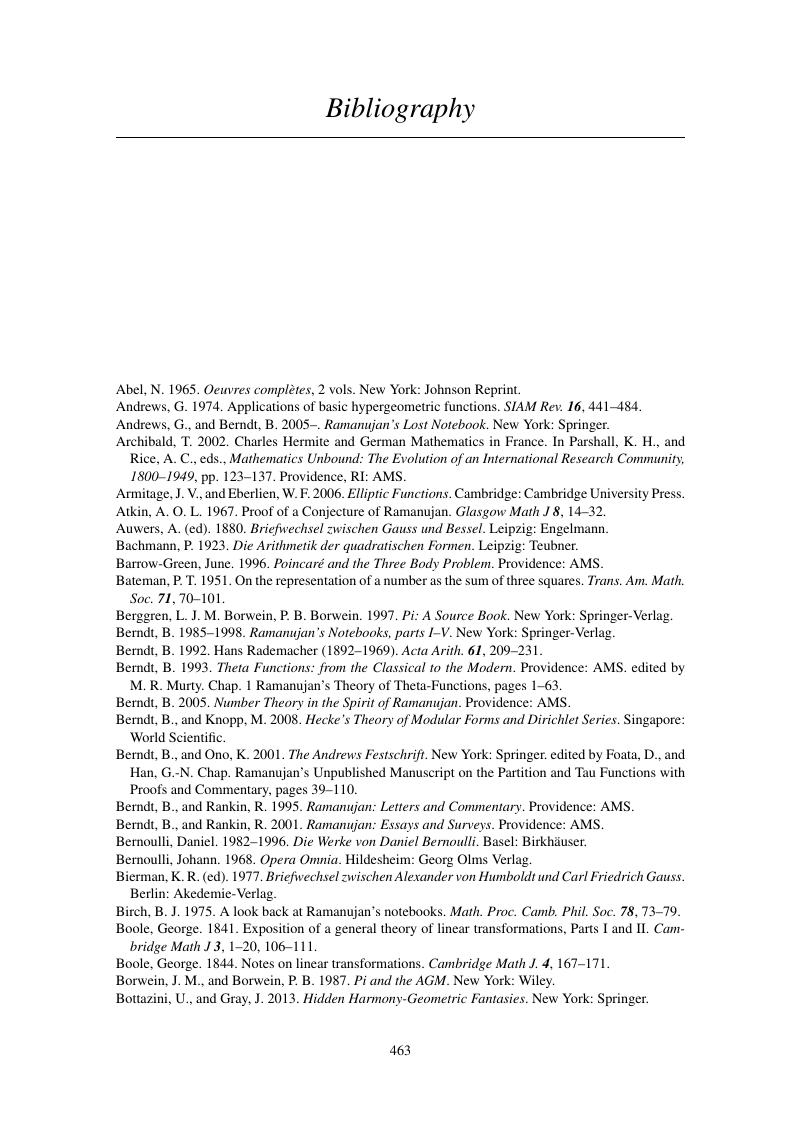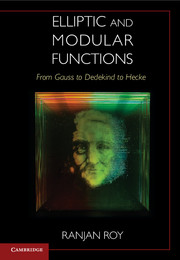Book contents
- Frontmatter
- Contents
- Preface
- 1 The Basic Modular Forms of the Nineteenth Century
- 2 Gauss's Contributions to Modular Forms
- 3 Abel and Jacobi on Elliptic Functions
- 4 Eisenstein and Hurwitz
- 5 Hermite's Transformation of Theta Functions
- 6 Complex Variables and Elliptic Functions
- 7 Hypergeometric Functions
- 8 Dedekind's Paper on Modular Functions
- 9 The η Function and Dedekind Sums
- 10 Modular Forms and Invariant Theory
- 11 The Modular and Multiplier Equations
- 12 The Theory of Modular Forms as Reworked by Hurwitz
- 13 Ramanujan's Euler Products and Modular Forms
- 14 Dirichlet Series and Modular Forms
- 15 Sums of Squares
- 16 The Hecke Operators
- Appendix: Translation of Hurwitz's Paper of 1904
- Bibliography
- Index
- References
Bibliography
Published online by Cambridge University Press: 20 April 2017
- Frontmatter
- Contents
- Preface
- 1 The Basic Modular Forms of the Nineteenth Century
- 2 Gauss's Contributions to Modular Forms
- 3 Abel and Jacobi on Elliptic Functions
- 4 Eisenstein and Hurwitz
- 5 Hermite's Transformation of Theta Functions
- 6 Complex Variables and Elliptic Functions
- 7 Hypergeometric Functions
- 8 Dedekind's Paper on Modular Functions
- 9 The η Function and Dedekind Sums
- 10 Modular Forms and Invariant Theory
- 11 The Modular and Multiplier Equations
- 12 The Theory of Modular Forms as Reworked by Hurwitz
- 13 Ramanujan's Euler Products and Modular Forms
- 14 Dirichlet Series and Modular Forms
- 15 Sums of Squares
- 16 The Hecke Operators
- Appendix: Translation of Hurwitz's Paper of 1904
- Bibliography
- Index
- References
Summary

- Type
- Chapter
- Information
- Elliptic and Modular Functions from Gauss to Dedekind to Hecke , pp. 463 - 470Publisher: Cambridge University PressPrint publication year: 2017

